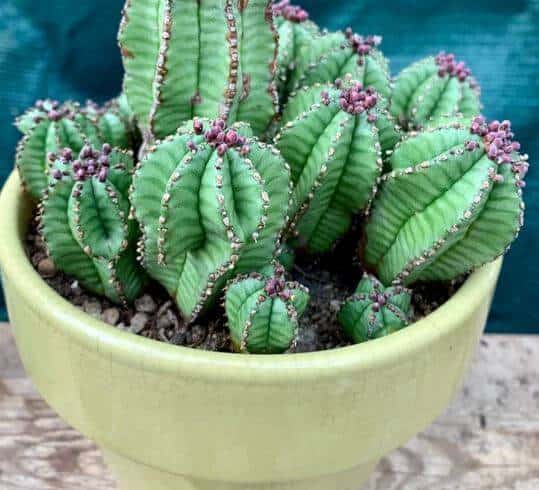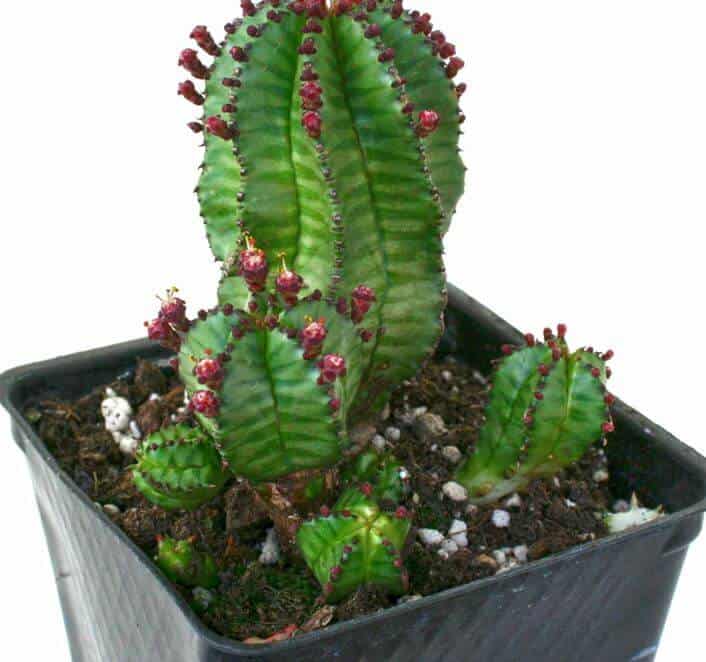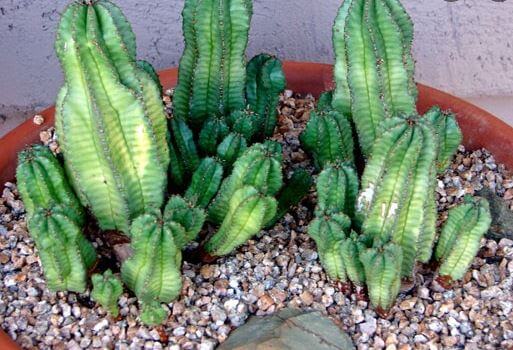Last Updated on September 9, 2023 by a Friendly Gardener
The Tanzanian zipper plant, or Euphorbia anoplia, is a succulent plant that looks more like a cactus, often resulting in confusion regarding this plant. There are no leaves or spines to this plant, although there are some tall-growing stems with multiple ridges on each of them.
Along the borders of each ridge, there are some unique twisting shapes that tend to resemble a zipper, thus earning this plant its nickname. This plant natively grows in parts of South Africa but is commonly grown as a houseplant across the world too.
As a result of its popularity as a houseplant, you can propagate it in your own house as well with a few specific care conditions that you will need to maintain.
Tanzanian Zipper Plant Propagation

You can grow the Tanzanian zipper plant in your own house, although it is likely that you might first need to find a mature plant of the same kind, either one that you have already grown or one that someone else has.
Although you can manage to find and sow seeds, this method is a lot more difficult, especially since the seeds are pretty hard to source. They also take much more time and effort to germinate in the first place.
Thus, using stem cuttings from a parent plant, you can grow the plant at home using the steps mentioned below.
- Take a pair of sharp shears or scissors and cut a few stem cuttings that are at least five inches in size. Remove any leaves on this stem.
- Use some rooting hormone on the stem cuttings to enable better growth.
- Take a pot or container full of soil and sand and plant the stem cutting into it. Cover the top with an additional but thin layer of soil.
- Once this is ready, you can carry the pot to where you want to keep it in your home. This could be your balcony, garden, or windowsill, although make sure you do not immediately expose it to harsh light.
- Start watering the plant infrequently and maintain other conditions around the plant.
Tanzanian Zipper Plant Care

Tanzanian zipper plants are succulents with thick stems that store water and some nutrients for the rest of the plant. As a result, these plants are quite hardy and can survive in various kinds of conditions.
Despite this, it can still be quite necessary for you to maintain a few conditions surrounding their growth so that they can keep growing in a healthy manner. The following sections can help clear these requirements up for you.
Sunlight
This plant has an affinity for bright sunlight, although it still does not enjoy direct and overwhelming levels of it. As a result, it can help to provide some indirect brightness to this plant for a few hours in the earlier half of the day while also ensuring that it gets enough shade in the afternoon hours.
This can help maintain the color of the plant.
Temperature
The temperature around the plant should be over 30℉, with the plant more likely to thrive when it is warmer outside. Although the plant is still hardy in USDA zones 9b to 11b (between 25℉ and 50℉), it cannot tolerate freezing temperatures too well and might also end up dying in frost.
At the same time, scorching hot temperatures can sometimes harm the plant too. If you live in a place where it gets too hot or cold, place your plant indoors and regulate the temperature.
Watering
Having an established and strict watering schedule is not something that might always work with this plant, given that it has succulent storage properties. This can allow it to make use of its existing water levels to survive, although you might still need to water your plant once every couple of weeks.
Sometimes, however, if you notice the soil drying up sooner or even later, make sure you tweak your watering routine accordingly. Try not to overwater the plant, especially during winter.
Soil

This succulent needs loose and coarse soil for healthy growth. There are many succulent soil mixes in the market that you can buy, although you can also use regular soil and mix in plenty of sand and some pebbles, moss, and peat.
In either case, the soil should have good drainage capacity so that no excess water floats around the soil.
Fertilizing
If you are growing your zipper plant in a pot, you might need to provide some balanced fertilizer to it on a monthly basis but only during the growing season. However, make sure you dilute this fertilizer to nearly half its power or capacity.
You can also make use of a phosphorous-rich fertilizer.
Flowering
The flowers of this plant usually tend to bloom in the months of spring and summer, forming small clumps or balls of deep red, purple, or burgundy. They usually appear along the ridges and at the peak of each stem.
However, if you happen to be growing these plants in pots, the flowers might not always appear.
Potting and Repotting

You should find a pot with a drainage hole so that the water can seep out of it. The pot should also be big enough to support the roots.
This plant grows relatively slowly, so you might not have to worry too much about repotting it fairly often. When you do, get a slightly bigger but similar pot along with some fresh soil.
Toxicity Levels
This plant can be toxic to your pets as well as to children, making it better to keep it out of their reach. Further, the plant tends to release a white sap that might cause you issues too, so try protecting your hands and face while handling this plant.
Final Remarks
The Tanzanian zipper plant is a special kind of succulent plant that closely resembles a cactus due to its stems and ridges. You can grow this plant at home by making use of stem cuttings.
Following the establishment of this plant in your home, you should see to its care and maintenance by providing bright light, irregular watering, and suitable soil, among others.


